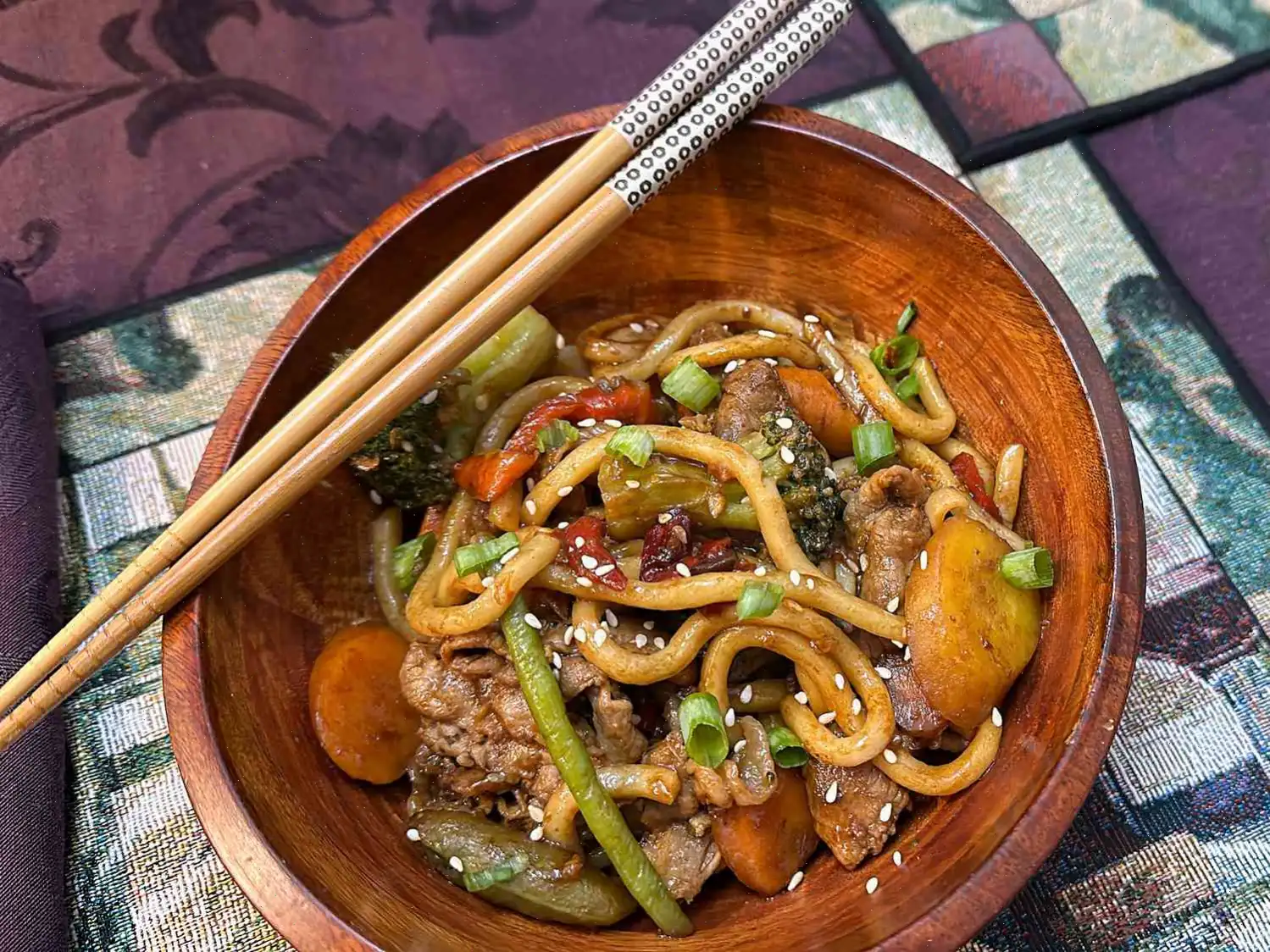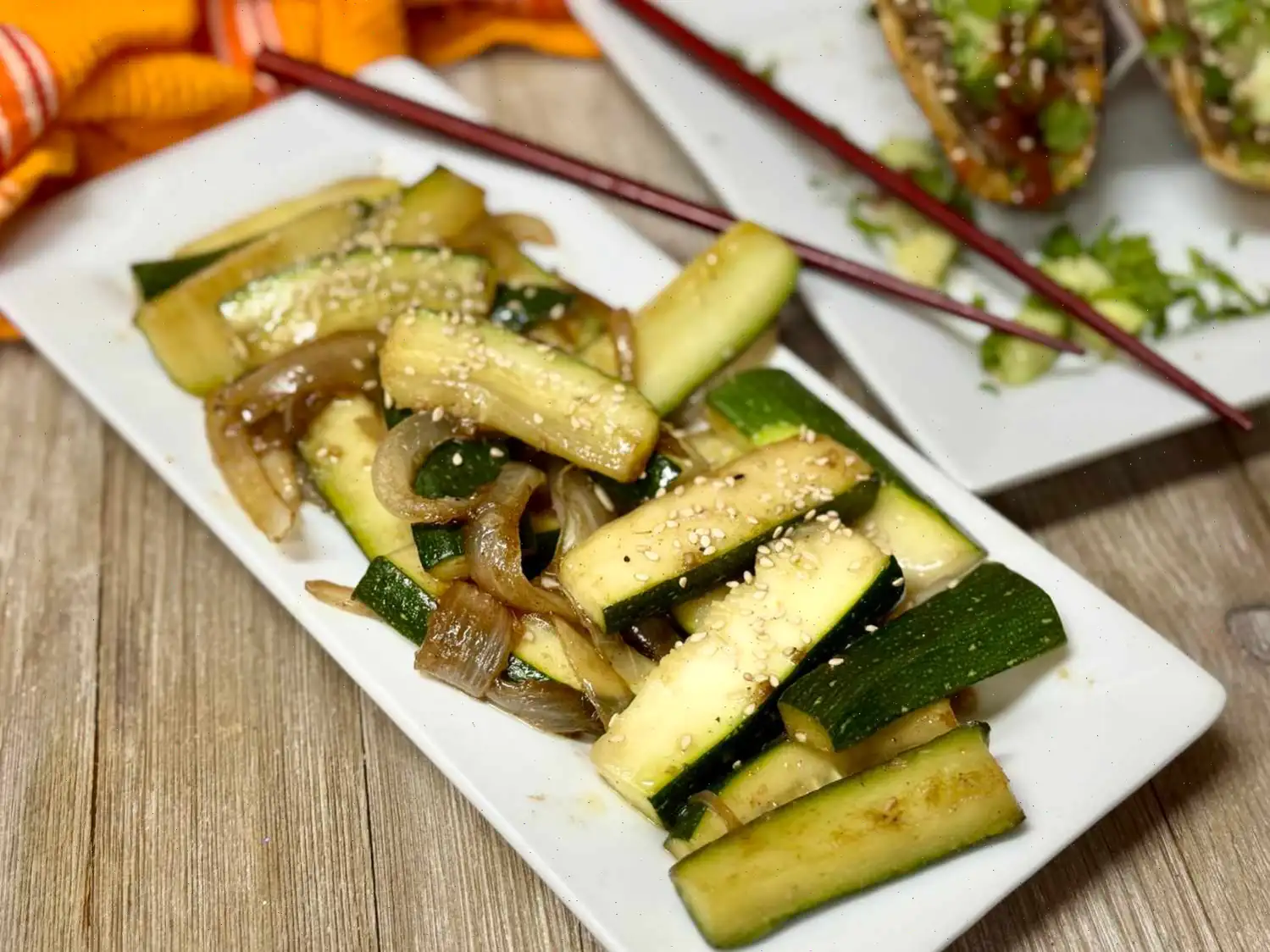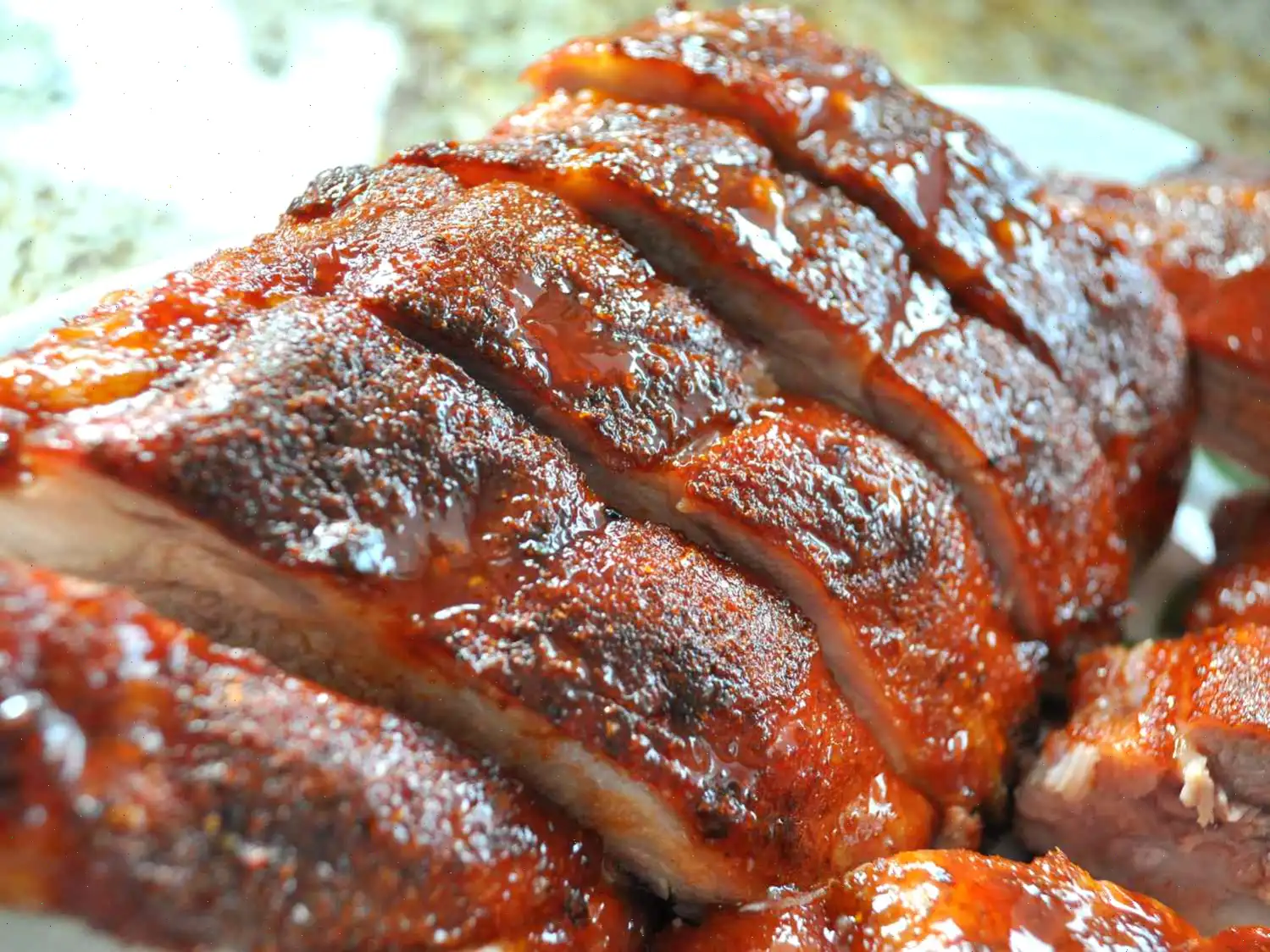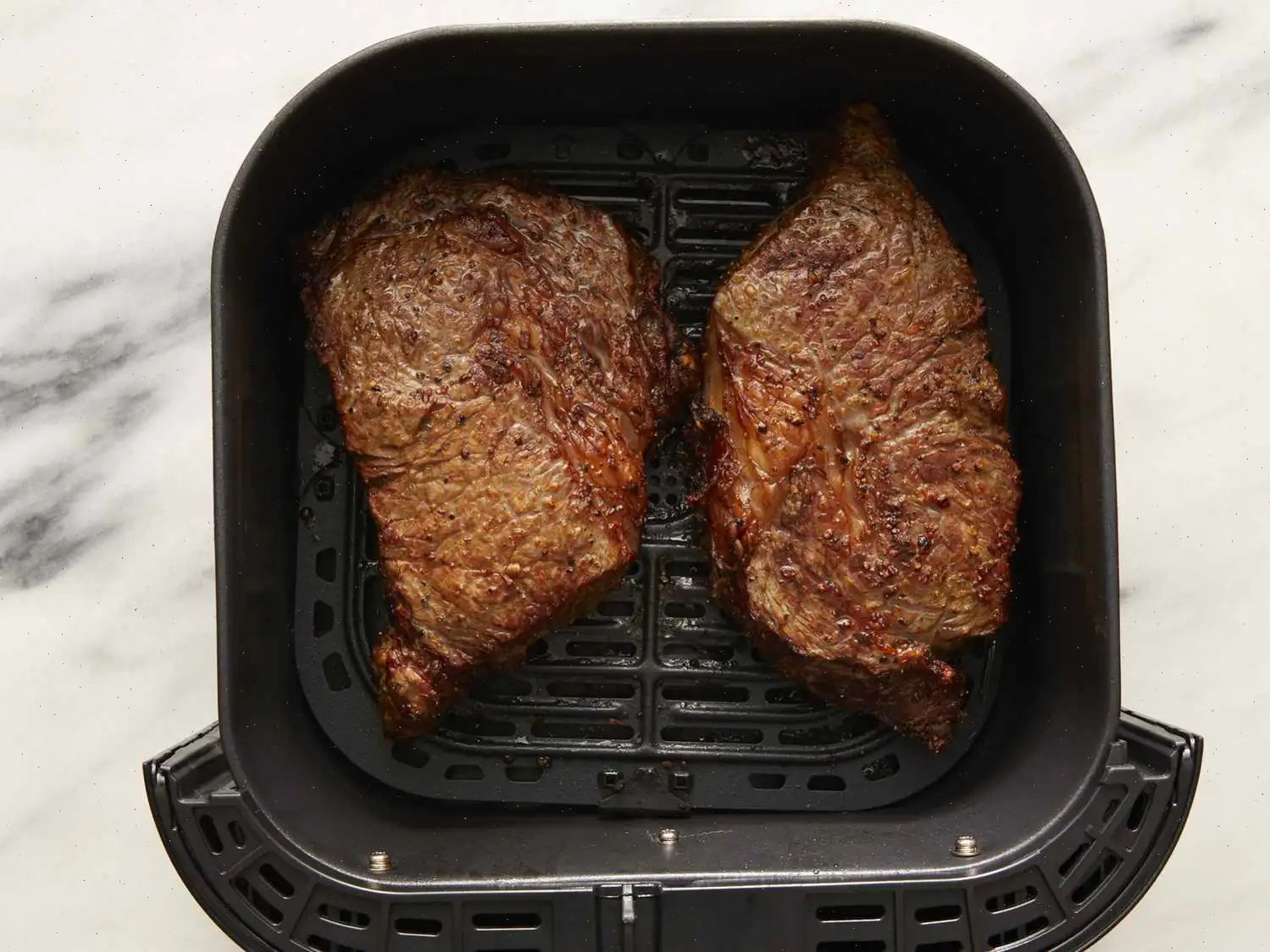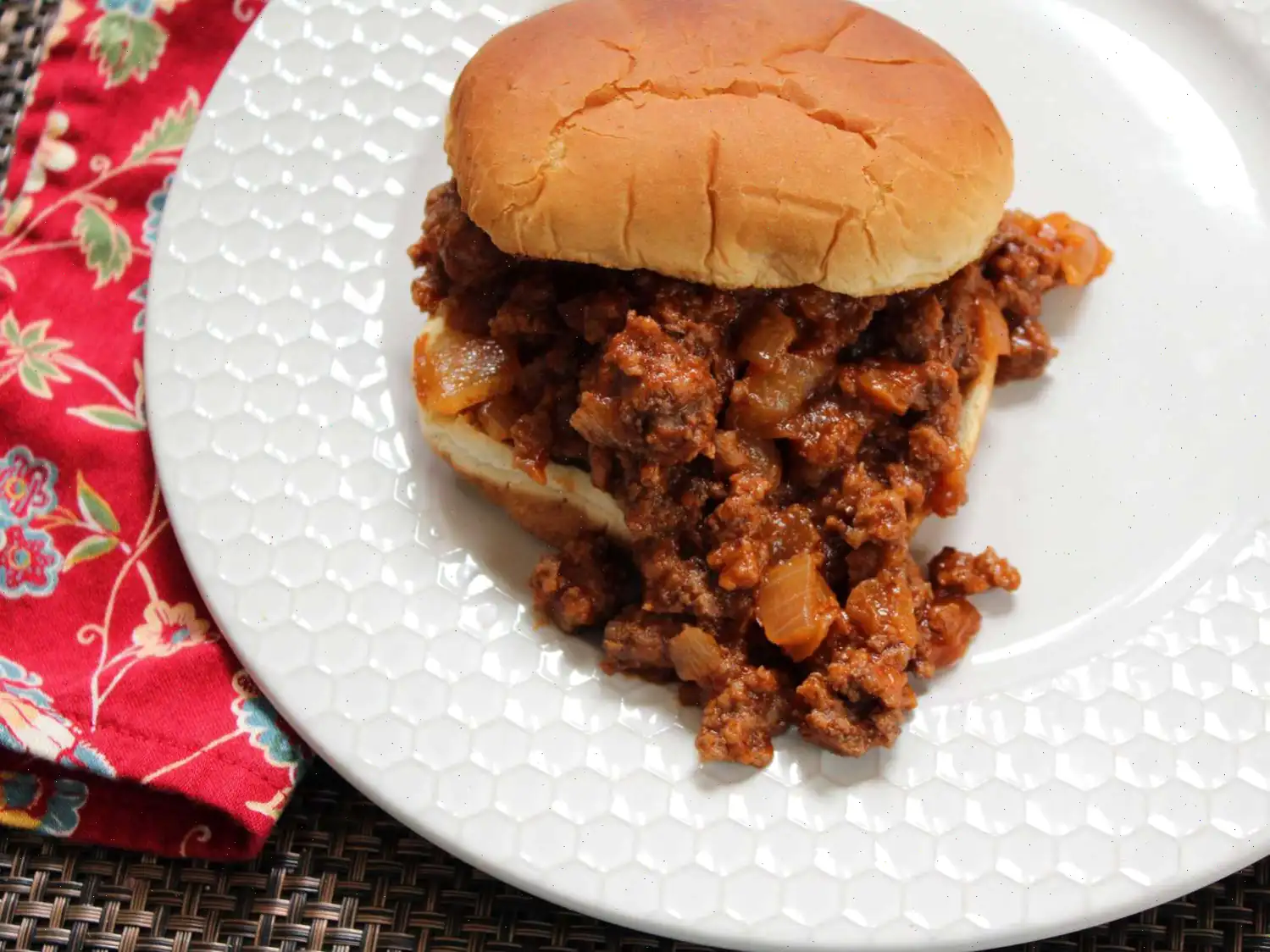
Spicy Vegetable Beef Udon Noodles Recipe
Ingredients
This recipe makes 3 servings. Adjust ingredient amounts as needed; cooking times remain the same.
- 1 1/2 tablespoons soy sauce
- 1 tablespoon dark soy sauce
- 1 teaspoon chili oil (adjust to taste)
- 1 1/2 tablespoons oyster sauce
- 1 1/2 tablespoons honey
- 1 1/2 tablespoons sesame oil
- 1 1/2 tablespoons water
- 1 1/2 teaspoons sesame seeds
- 1 pound udon noodles
- 1 tablespoon grapeseed oil
- 4 cloves garlic, minced
- 2 cups frozen stir-fry vegetables
- 1/2 pound rib eye steak, thinly sliced
- 2 green onions, thinly sliced
Directions
- In a small bowl, whisk together soy sauce, dark soy sauce, chili oil, oyster sauce, honey, sesame oil, water, and sesame seeds. Set aside for later use.
- Bring a large pot of salted water to a boil. Add udon noodles and cook until tender but still slightly firm, about 8-10 minutes. Drain, rinse with cold water, and drain again. Set aside.
- Heat grapeseed oil in a large pan over medium-low heat. Add minced garlic and stir-fry vegetables. Cook for 2 minutes while stirring continuously.
- Add the sliced beef to the pan and cook until fully browned, approximately 3 minutes.
- Return the noodles to the pan, pour in the prepared sauce, and toss everything together until well coated. Season with salt and pepper to taste.
- Garnish with thinly sliced green onions and serve immediately.
Nutrition Facts (per serving)
- Calories: 606
- Fat: 36g (46% DV)
- Saturated Fat: 9g (46% DV)
- Cholesterol: 59mg (20% DV)
- Sodium: 1641mg (71% DV)
- Carbohydrates: 46g (17% DV)
- Dietary Fiber: 5g (18% DV)
- Sugars: 13g
- Protein: 29g (57% DV)
- Vitamin C: 106mg (117% DV)
- Calcium: 111mg (9% DV)
- Iron: 5mg (26% DV)
- Potassium: 799mg (17% DV)
*Percent Daily Values are based on a 2,000 calorie diet. Individual needs may vary.
**Nutrient information may not cover all ingredients. Consult a healthcare professional if following a restrictive diet.
History and Origins of Spicy Vegetable Beef Udon Noodles
Spicy Vegetable Beef Udon Noodles trace their roots back to Japan, where udon, a thick wheat noodle, has been a staple for centuries. Traditionally, udon was served in simple broths with seasonal vegetables or seafood. The combination of beef and a spicy, garlicky sauce reflects a more modern, fusion approach influenced by neighboring Asian cuisines, especially Korean and Chinese stir-fry techniques. This adaptation highlights the evolution of Japanese comfort food into bold, flavor-forward dishes that cater to contemporary tastes.
Regional Variations and Specialties
While originating in Japan, this dish has been embraced in various regions across Asia with localized twists. In Osaka, for example, udon tends to be slightly sweeter with milder seasoning, while in Tokyo, chefs often favor a more robust, savory broth with a sharper edge of soy sauce. When incorporating chili oil and stir-fried vegetables, regional interpretations may include local produce such as bell peppers, carrots, mushrooms, or even bok choy, giving each version a distinct texture and flavor profile.
Differences from Similar Dishes
Unlike traditional Japanese udon soup or plain yaki-udon, Spicy Vegetable Beef Udon Noodles emphasize a stir-fry approach rather than a broth-based presentation. The dish is characterized by its thick, chewy noodles coated in a bold, savory sauce with a hint of sweetness and spice, setting it apart from dishes like ramen, which are typically broth-heavy, or chow mein, which uses thinner wheat noodles. The combination of tender beef and crisp vegetables, all tossed together, creates a unique balance of texture and flavor.
Typical Serving Locations
This dish is popular in casual dining restaurants, noodle houses, and modern Asian fusion eateries. It is often served as a hearty lunch or dinner option and can also appear on street food menus in urban areas with strong Asian culinary influences. In homes, it has become a favorite for quick weeknight meals due to its short cooking time and versatility, allowing cooks to adjust spice levels and vegetable choices according to preference.
Interesting Facts
- Udon noodles are traditionally hand-pulled, though modern recipes often use store-bought noodles for convenience.
- The combination of sesame oil, soy sauce, and oyster sauce creates a umami-rich flavor that has made this dish a global favorite.
- Chili oil was originally used in Chinese cuisine, but its addition to udon represents a fusion of culinary traditions across Asia.
- Green onions not only enhance the flavor but also add a pop of color, which is considered important in Japanese plating aesthetics.
- Because the dish is stir-fried, it retains more nutrients from the vegetables compared to boiling, making it a slightly healthier option than traditional soups.
Overall, Spicy Vegetable Beef Udon Noodles offer a perfect blend of tradition and innovation, combining Japans iconic noodles with bold, contemporary flavors that appeal to diverse palates worldwide.


